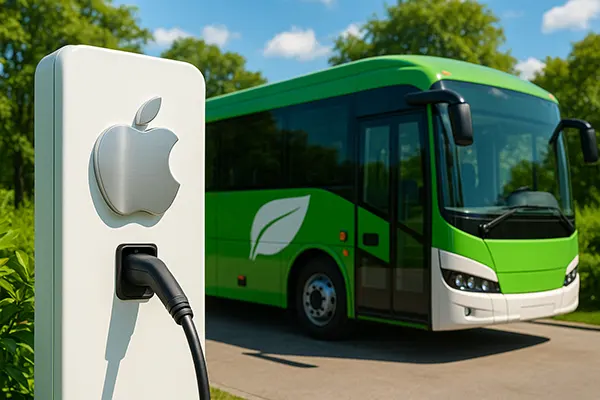
How Apple Embraces Green Manufacturing: A Deep Dive into the 2024 Environmental Report
In recent years, Apple has consistently aimed to position itself at the forefront of sustainable technological innovation. With mounting global concerns around climate change, carbon emissions, and ethical sourcing, the company has taken a bold stance, turning its supply chains and product lines into case studies for eco-conscious manufacturing. The 2024 Environmental Progress Report released by Apple in February serves as a comprehensive roadmap, showing both achievements and areas of continued commitment.
Key Environmental Milestones in the 2024 Report
According to the 2024 report, Apple has maintained 100% renewable electricity usage across all corporate operations in 44 countries, a goal it first achieved in 2018. The spotlight in this year’s update, however, is on the expansion of clean energy usage across the supply chain. Now, over 300 manufacturing partners—accounting for more than 95% of Apple’s direct manufacturing spend—have committed to using clean electricity for Apple production. This demonstrates a strong effort not only to “clean up” its own house but also to influence the practices of third parties globally.
The report also showcases a significant reduction in Apple’s overall carbon footprint. In 2023, Apple’s emissions totalled 17.1 million metric tonnes of CO₂e—down by over 50% from its 2015 baseline. Much of this progress is attributed to design innovations, such as transitioning to recycled materials, and enhanced energy efficiency throughout product lifecycles.
Furthermore, Apple continues to invest in nature-based solutions for carbon removal. Through partnerships like the Restore Fund, Apple supports forest preservation and regeneration projects which are aligned with rigorous third-party standards. By focusing on real, measurable impact, Apple strengthens the credibility of its carbon neutrality goals.
Progress on Recycled and Low-Carbon Materials
In terms of materials, Apple has expanded its use of recycled rare earth elements, aluminium, cobalt, and gold across many of its core products. For instance, the 2024 iPhone and MacBook models feature enclosures made from 100% recycled aluminium, while the battery supply chain now integrates recycled cobalt in selected models. These are major steps in reducing dependency on virgin mining activities, which are often environmentally destructive and ethically problematic.
Apple’s commitment to reducing environmental harm extends into even the smallest product components. In 2024, the company began using recycled gold in the plating of multiple printed circuit boards—a technically complex process that was previously considered unfeasible on a commercial scale. This marks a new era in sustainable materials engineering.
By developing its own custom alloys and sourcing innovations, Apple is setting industry-wide precedents. For suppliers, compliance with Apple’s environmental standards is now a prerequisite for doing business, which elevates industry norms for sustainability.
Driving Change in the Global Supply Chain
Apple’s Clean Energy Programme is central to reshaping how its vast supplier network approaches sustainability. By offering technical support and fostering partnerships, Apple helps its suppliers transition to renewable energy. According to the 2024 report, projects supported by Apple have led to more than 15.7 gigawatts of clean energy commitments, with 6.3 gigawatts already operational by the end of 2023.
The company also reinforces these efforts through public accountability. It requires annual environmental disclosures from its manufacturing partners, which are verified by third-party audits. As a result, transparency has become a pillar of Apple’s environmental stewardship, setting benchmarks for other tech giants.
Moreover, Apple introduced stricter water conservation policies and implemented closed-loop manufacturing processes where feasible. These actions not only reduce water consumption but also prevent the leakage of harmful substances into local ecosystems—especially vital in countries where water scarcity is a growing concern.
Support for Circular Economy Principles
Apple continues to integrate circular economy principles through its expanding product take-back and recycling programmes. Its disassembly robot, Daisy, is now operational in multiple regions and has increased efficiency in recovering valuable materials from returned devices.
In 2024, Apple reported that more than 11.7 million devices were refurbished and prepared for resale, extending the life of its products and lowering electronic waste. This aligns with the company’s philosophy of building products that last longer, rather than contributing to fast-tech consumption cycles.
The company is also promoting reuse at the consumer level. Through trade-in incentives and education campaigns, Apple encourages users to return their old devices for credit, feeding those devices into a tightly controlled refurbishment pipeline. This serves both environmental and economic goals.

Looking Ahead: Apple’s 2030 Vision
Apple has reaffirmed its ambitious target to make every product carbon-neutral by 2030. This goal encompasses not just direct operations but also manufacturing and product usage. The 2024 report outlines how Apple plans to achieve this, focusing on energy transition, material innovation, and ecosystem support.
The company’s innovation in low-carbon shipping and packaging also stands out. Nearly all of Apple’s packaging now uses wood fibre from recycled or responsibly sourced sources. Plastic usage in packaging has been reduced by 75% since 2015, showing steady, measurable progress.
Through its Carbon Solutions Fund, Apple is scaling high-quality carbon removal initiatives that go beyond tree planting. These projects include soil carbon capture, wetland restoration, and regenerative agriculture—all vetted for permanence and co-benefits to biodiversity.
The Role of Technology in Environmental Transparency
Apple has started integrating blockchain technology to enhance traceability of its materials. This allows the company to verify sources and environmental practices at each stage of the supply chain. Transparency, now enabled by tech, becomes a lever for transformation.
AI and machine learning are also helping Apple improve energy efficiency during both manufacturing and usage. For example, predictive algorithms optimise component fabrication, cutting energy waste. On the user side, smart power management extends battery life and reduces cumulative carbon impact.
Finally, Apple’s public-facing dashboards and updates offer a detailed view of ongoing environmental performance. This encourages stakeholders—from customers to investors—to stay informed and hold the company accountable in real time.
Related articles
-
 Apple’s Environmental Initiatives in ...
Apple’s Environmental Initiatives in ...In 2025, Apple stands as one of the leading technology …
-
 Digital Archives of Antiquity: How Ap...
Digital Archives of Antiquity: How Ap...In 2025, technology has become an essential bridge between the …
-
 Mobile Payments 2025: Apple Pay in Eu...
Mobile Payments 2025: Apple Pay in Eu...By 2025, mobile payments in Europe have become an integral …
